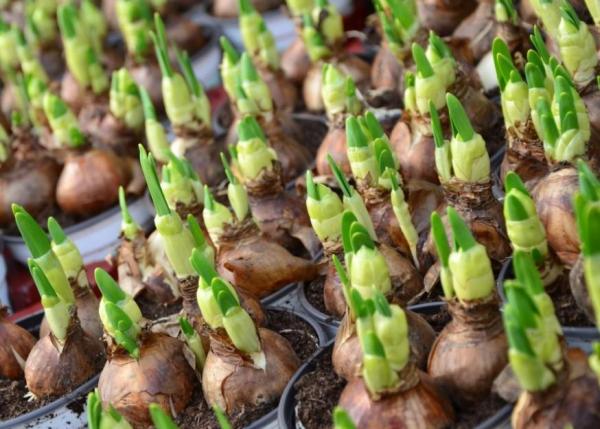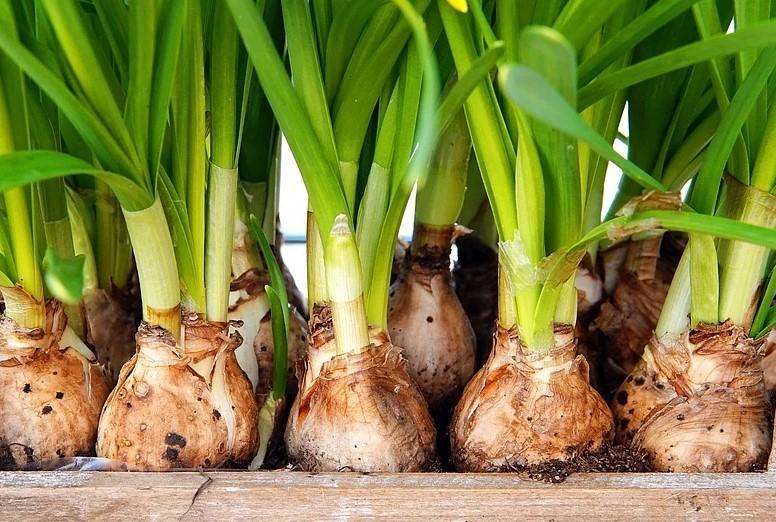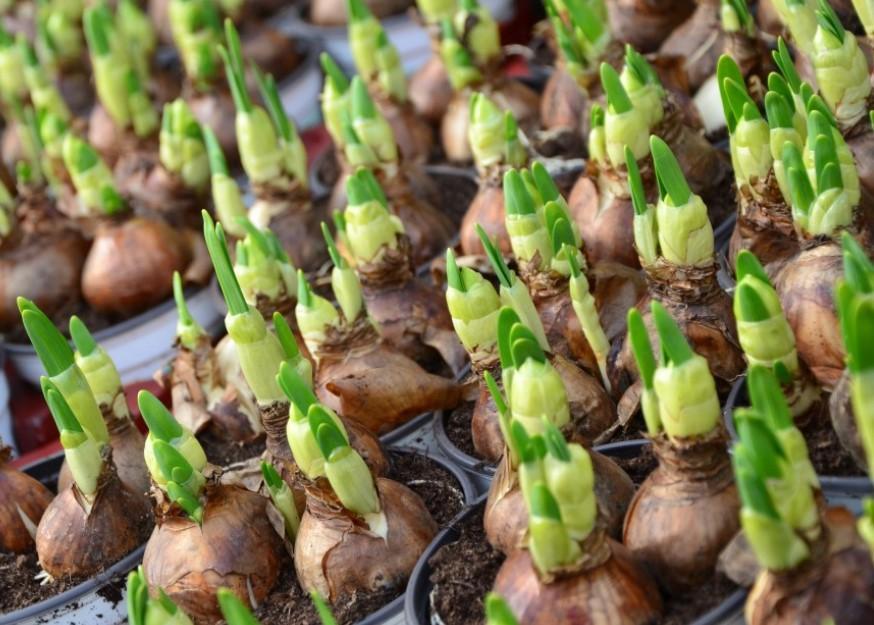What Are Bulbs in Botany?


For any gardening enthusiast, the word "bulb" is practically a household term. These fascinating underground structures play a vital role in countless plants, gracing our gardens with vibrant blooms and enriching our kitchens with delicious vegetables. From the lily to the onion, bulbs come in a surprising variety of shapes, sizes, and colors.
In the following article by thedailyECO we will explore, what bulbs are, their key characteristics, the different bulb types, and wrap it up with some popular examples you might already know.
What are bulbs and their characteristics
The bulb is a modified underground stem found in many plant species. It serves as a specialized storage organ containing concentrated carbohydrates, proteins, and other nutrients. These reserves are essential for the plant's survival and growth, particularly during unfavorable periods.
Bulbous plants are prevalent in regions with unpredictable climates. This adaptation allows them to withstand harsh conditions by sacrificing their above-ground foliage. The bulb, acting as a subterranean pantry, provides the necessary resources for the plant to remain dormant until favorable conditions return, at which point it can sprout new leaves and flowers.
Beyond storage, bulbs play a critical role in plant propagation. Embedded within the bulb are tiny structures called lateral buds. These buds have the potential to develop into new, miniature bulbs, a process known as bulblet formation.
As these bulblets mature, they can eventually become independent plants, forming new individuals that are genetically identical to the parent plant. This method of asexual reproduction allows bulbs to efficiently expand their populations and colonize new areas.
While bulbs are specialized for storage and reproduction, they don't function in isolation. A network of roots emerges from the base of the bulb, anchoring the plant and absorbing water and nutrients from the soil. Stems grow from the bulb as well, allowing leaves and flowers to emerge above ground. These above-ground structures play a vital role in photosynthesis, the process by which plants convert sunlight into energy.
Throughout the plant's life cycle, the bulb and its above-ground structures work in harmony. During favorable growing conditions, the leaves capture sunlight for photosynthesis, creating energy that is stored in the bulb. This stored energy then fuels the development of flowers for reproduction and ensures the plant's survival during challenging periods.
To learn more about the fascinating world of asexual reproduction in plants, be sure to check out this article.

Types of bulbs
The fascinating world of bulbs offers a surprising amount of variety. Here's a breakdown of the two main classifications and some interesting examples:
Tunicate bulbs
These bulbs are characterized by layers of modified leaves that encase a central bud. Imagine an onion – its fleshy layers are a perfect example. The layers, often dry and papery, provide protection and insulation for the inner parts of the bulb. Examples include onions, shallot, garlic and freesias.
Imbricated bulbs
Unlike tunicate bulbs, imbricated bulbs lack a distinct outer layer. Instead, their fleshy scales are actually modified leaves, tightly packed around a core. Think of a lily bulb – its overlapping scales showcase this structure. Examples include lilies, tulips, hyacinths, daffodils.
Some bulbs, like crocus, don't fall neatly into either category. They have a single, solid fleshy structure without distinct layers.
While often confused with bulbs, corms are another type of underground storage organ. Unlike bulbs, they have a solid, swollen stem base instead of fleshy scales or layers. Examples include crocus, gladiolus, and caladium.
As we have seen, this classification system provides a basic framework for understanding bulb structure. However, the diversity of the plant kingdom extends beyond these categories. Some bulb species exhibit unique characteristics that blur the lines between these classifications.
Parts of the bulbs
Designed for survival and propagation, a bulb comprises several essential components:
- Basal plate: located at the bulb's base, the basal plate is the point of attachment for roots, which absorb water and nutrients from the soil.
- Scales or layers: these fleshy structures, often resembling leaves, make up the bulk of the bulb. They store essential nutrients like carbohydrates and proteins, vital for plant growth and survival during dormancy or unfavorable conditions. Essentially, these are modified leaves that have thickened for storage purposes.
- Tunic: not all bulbs possess a tunic. When present, this outermost layer acts as a protective sheath, safeguarding the bulb from dehydration, mechanical damage, and even some pathogens. Onions are a classic example of bulbs with a tunic.
- Stems and buds: stems emerge from the basal plate and play a crucial role in the bulb's life cycle. Buds located on the stem or within the scales can develop into new shoots, giving rise to the plant's aerial parts. Additionally, some stems might produce new bulblets, facilitating asexual reproduction.
It's important to note that while these are the key components of a bulb, plants with bulbs also possess the typical plant structures like roots, leaves, and flowers. These above-ground structures contribute to the overall growth, development, and photosynthetic needs of the plant.
Examples of plants with bulbs
Bulb plants come in a surprising array of shapes, sizes, and colors. Let's explore some of the most popular bulbs.
- Onion (Allium cepa): a versatile and widely cultivated vegetable with numerous varieties. Planting times can vary depending on the specific type of onion, with some suited for spring planting and others for fall.
- Garlic (Allium sativum): a popular bulb native to Central Asia, featuring a range of varieties. Renowned for its culinary applications, garlic also holds significance for its potential health benefits.
- Saffron Crocus (Crocus sativus): this bulbous plant produces stunning purple flowers and the highly prized saffron spice. Extracted from the flower's stigmas, saffron is nicknamed "red gold" due to its high value and labor-intensive production process, requiring a large number of flowers to yield a small amount of spice.
- Tulip (Tulipa spp.): an iconic perennial flower belonging to the Liliaceae family. Originally from regions like Holland, tulips have become synonymous with beauty and come in a vast array of colors and patterns.
- Lily (Lilium spp.): renowned for their impressive height and large, decorative flowers, lilies are popular bulbous flowering plants. They often boast a pleasant fragrance, making them a captivating addition to gardens and floral arrangements.
- Daffodil (Narcissus spp.): cheerful spring flowers with trumpet-shaped blooms in yellow, white, and orange. Daffodils are known for their resilience and ability to naturalize in various climates.
If you want to read similar articles to What Are Bulbs in Botany?, we recommend you visit our Biology category.






